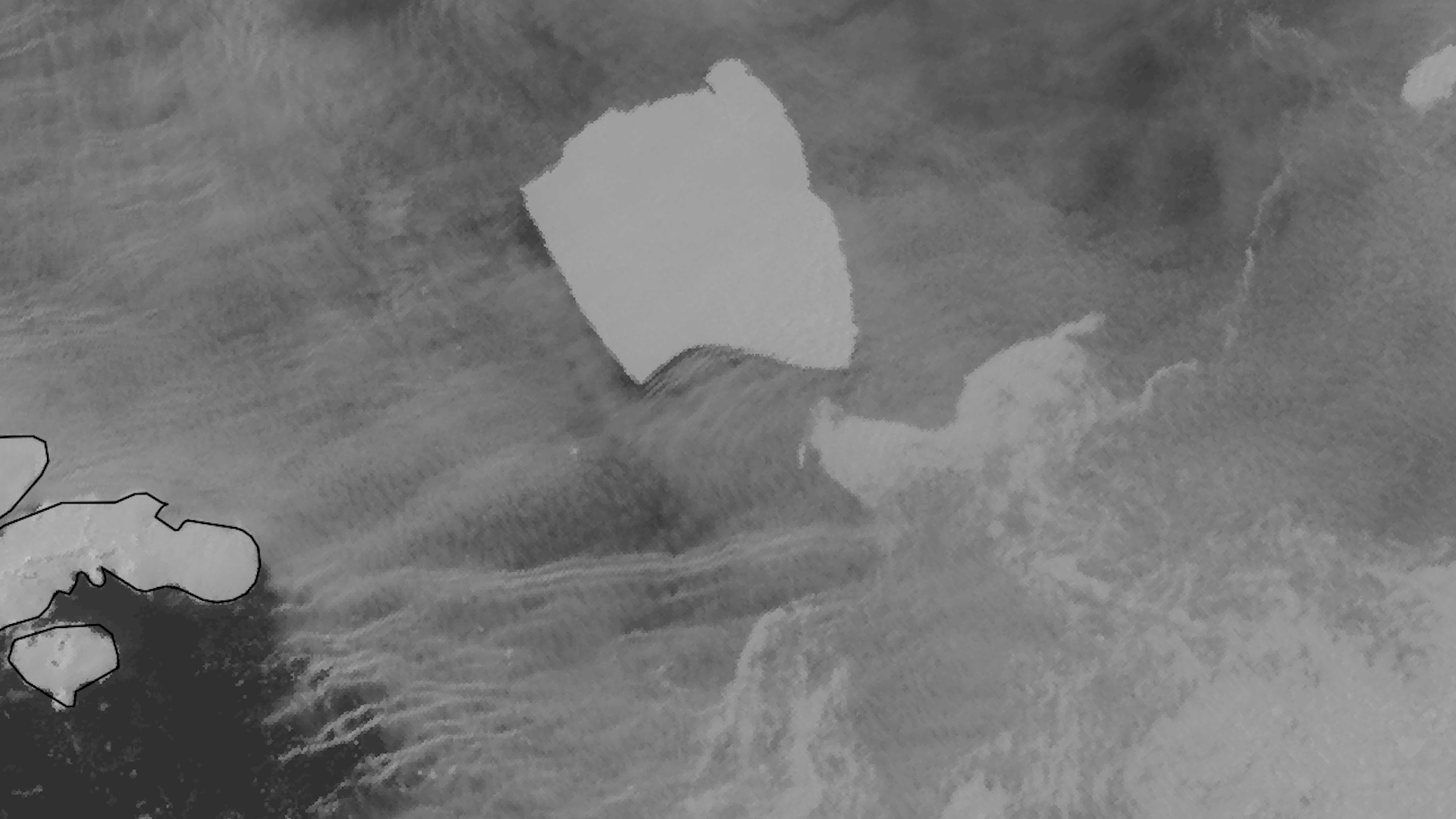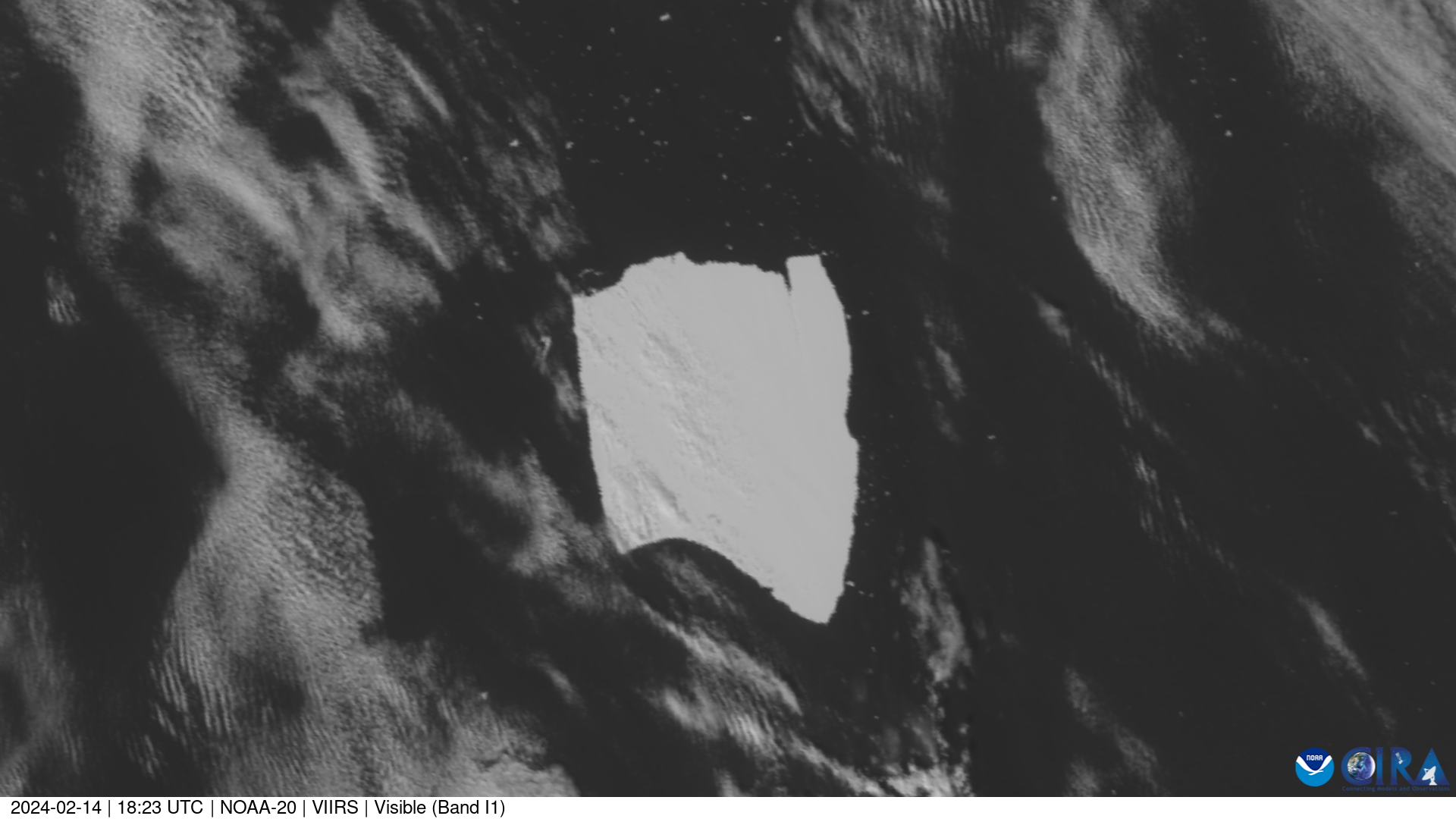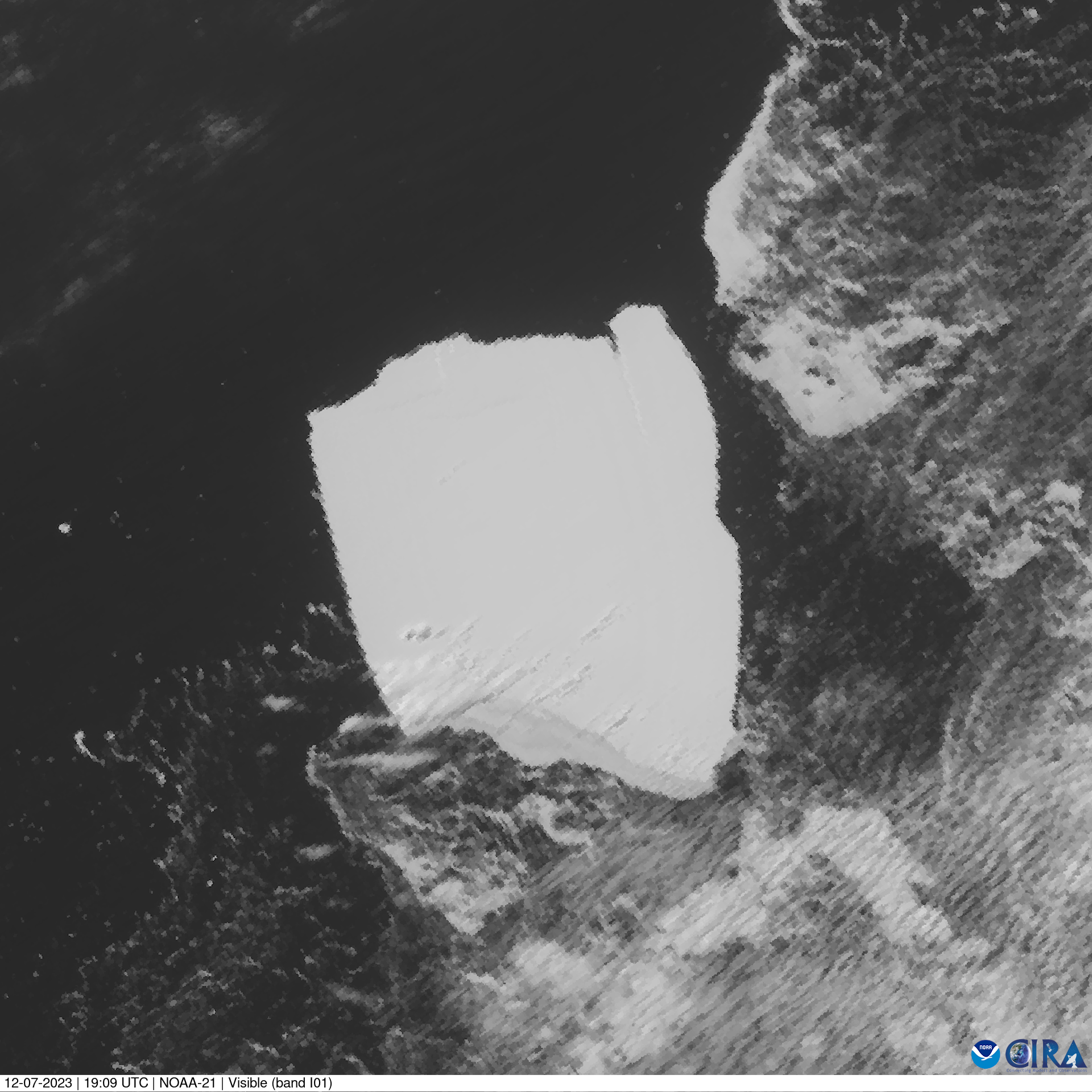Iceberg A23a
A23a is a large tabular iceberg in the southern Atlantic Ocean. As of January 2025, its area is approximately 1,505 sq. miles (3,900 km²), which makes it the current largest iceberg in the world. This makes it roughly the same size as Rhode Island, twice the size of the greater London area, or three times the size of New York City.
A23a originally calved from the Filchner-Ronne Ice Shelf in 1986, but it quickly grounded in the Weddell Sea, where it was stuck for over 30 years. In 2020, the iceberg started slowly shifting before moving past the northern tip of the Antarctic Peninsula in November 2023.
On 1 December 2023, the polar research ship RRS Sir David Attenborough intercepted the iceberg off the tip of the Antarctic Peninsula, sampling the waters around the berg.
By April 2024 the iceberg had entered the Antarctic Circumpolar Current, but soon became trapped in a Taylor Column north of the South Orkney Islands, spinning in circles. Taylor Columns are huge rotating cylinders of water that are created by ocean waters moving over underwater terrain. It took until December 2024 for A23a to free itself from the column and drift further north through the Southern Ocean.
The British Antarctic Survey expects A23a to follow the Antarctic Circumpolar Current towards the island of South Georgia in the southern Atlantic Ocean. In the beginning of March 2025, the iceberg encountered shallower waters off the island, and ran aground about 30 miles (50 km) from the shore.
Satellite imagery of this event:
Hover over the boxes to play. Click the images to view enlarged





